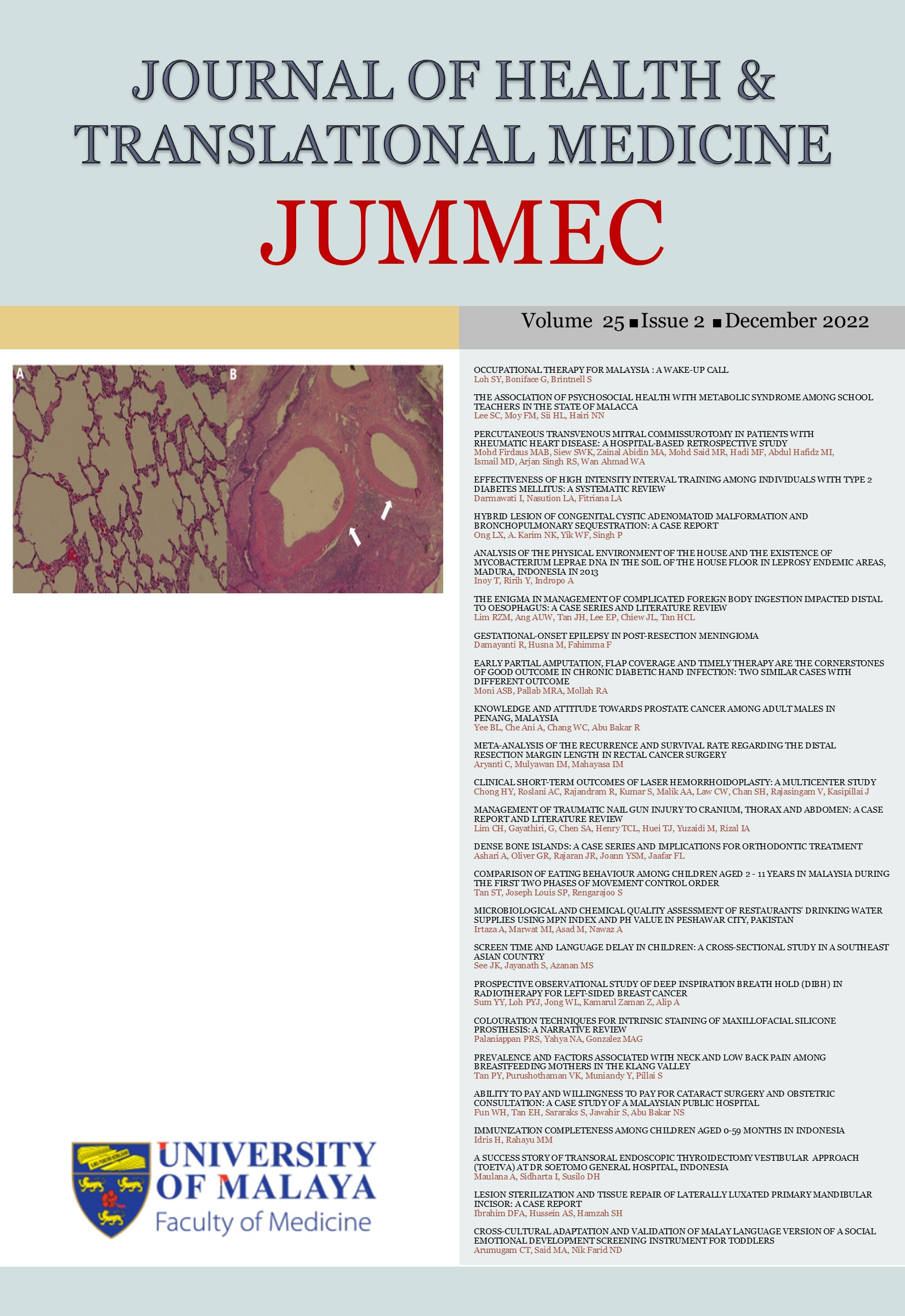MICROBIOLOGICAL AND CHEMICAL QUALITY ASSESSMENT OF RESTAURANTS’ DRINKING WATER SUPPLIES USING MPN INDEX AND PH VALUE IN PESHAWAR CITY, PAKISTAN
Received 2021-11-12; Accepted 2022-03-04; Published 2022-11-23
DOI:
https://doi.org/10.22452/jummec.vol25no2.16Abstract
Background: Most of water-related illnesses and acute diarrheal cases can be traced back to poor microbiological water quality and unhygienic sanitary practices. The widely accepted standard in literature for Microbiological quality of drinking water is that an “Ideal’ drinking water sample should have a Most Probable Number / 100 ml value of 0. But samples having value of 1-10 can be labelled as “Acceptable” given that they are subjected to regular water quality analysis.
Objective: To assess the chemical and biological properties of drinking water supplies in local restaurants of Peshawar city, Pakistan.
Methods: A cross-sectional study in which 50 drinking water samples collected from local restaurants of Peshawar city using non probability convenient sampling technique were assessed for “Total Coliform Organisms” by using “Multiple Fermentation Tube” or “Most Probable Number” technique using MacConkey’s broth and pH was measured by using Digital pH meter.
Results: pH values of water samples were within the World Health Organization’s standard permissible limits. 64% of water samples had MPN /100 ml value of >10 while 36% had value in the range of 1-10 with no water sample having a value of 0.
Conclusions: The results draw attention to a considerable environmental and human health dilemma that is the contamination of drinking water. Suggestions include treating the water via a filtration and chlorination unit before distributing it, carrying out regular assessment of water quality and enhancing water quality safety measures in such places as restaurants.
Downloads
Downloads
Published
Issue
Section
License
All authors agree that the article, if editorially accepted for publication, shall be licensed under the Creative Commons Attribution License 4.0 to allow others to freely access, copy and use research provided the author is correctly attributed, unless otherwise stated. All articles are available online without charge or other barriers to access. However, anyone wishing to reproduce large quantities of an article (250+) should inform the publisher. Any opinion expressed in the articles are those of the authors and do not reflect that of the University of Malaya, 50603 Kuala Lumpur, Malaysia.


